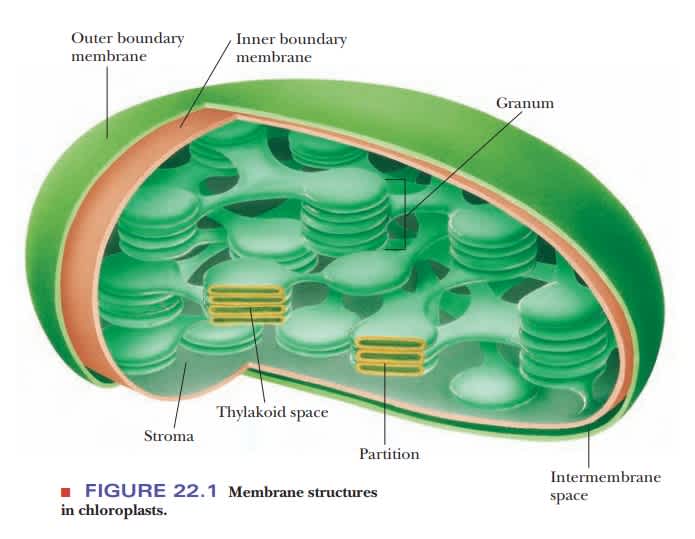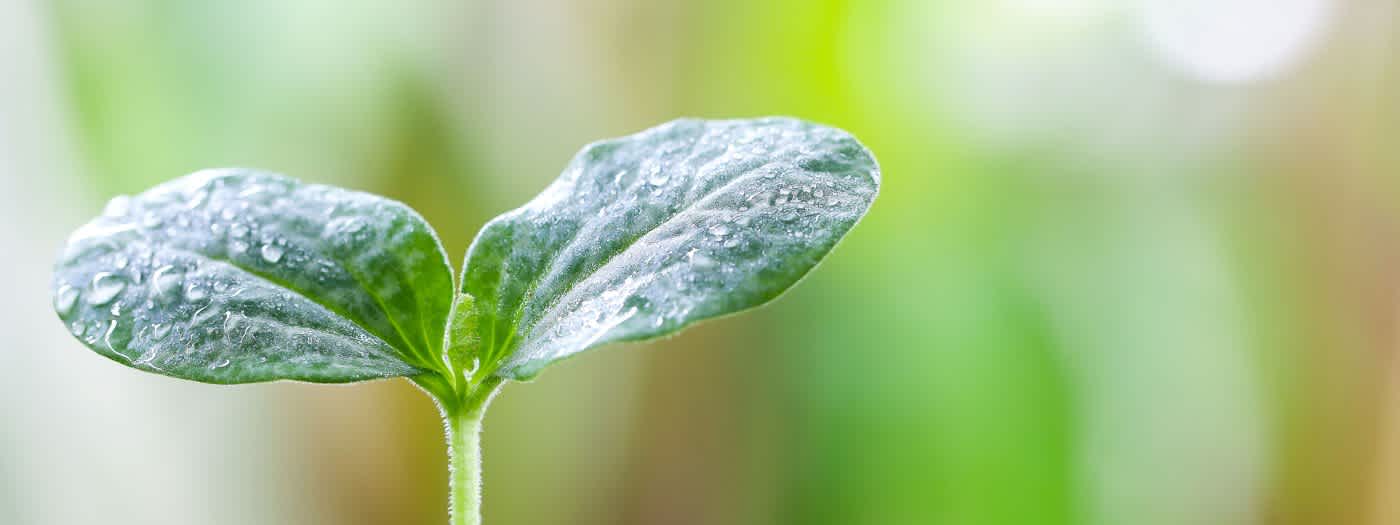Introduction
Oxygen liberated during the photosynthesis process comes from water and not from CO2 molecules. Cornelius van Niel proved this for the first time. He did the experiment with green and purple sulfur bacteria. He came to a conclusion that when H2S is consumed as a Hydrogen donor instead of Water (H2O), then the Oxidation product is Sulpher. Oxygen is not liberated in this process.
In photosynthetic organisms of different plant species undergo photosynthesis. During photosynthesis, light energy is converted into chemical and other types of energy. This process can be carried out by different types of organisms. These include anaerobic and aerobic photosynthetic bacteria and eukaryotic plants and algae. The process of photosynthesis can be broken down into different stages. In the first stage when the energy of light is absorbed by the photosynthetic organism.
What is Photosynthesis?
In photosynthesis, green plants, algae, and some bacteria use solar energy. They use it to convert CO2 to oxygen and sugars. The sugars are then used by the plant for growth. Some of these principles are also used in the respiration process of animals.

photosynthesis
Plants and animals use the same chemical process to convert food into energy. The only difference between photosynthesis and respiration is the source of the energy. The process of photosynthesis is the basis for life on earth. The oxygen that we breathe comes from photosynthesis. Photosynthesis is a process in which photosynthetic organisms trap light energy. They use this light energy to convert CO2 and water into glucose and oxygen. Photosynthesis is the chemical process by which this conversion takes place. The first step of photosynthesis is the absorption of light energy by chlorophyll. Chlorophyll is a green pigment found in the leaves of plants. In this step, the chlorophyll absorbs a photon of light and transfers its energy to a series of molecules. This process converts light energy into chemical energy.
Why do plants do Photosynthesis?
Some plants have features that enable them to use the sun's energy to make their own food. Scientists call this process photosynthesis. Energy from the sun enters the leaves of plants through chlorophyll, a green pigment. Chlorophyll absorbs light energy in a chemical reaction. This light energy is used to make sugars. Plants need these sugars to grow and to produce the oxygen we breathe.
What are some Raw materials for Photosynthesis?
The main raw material of photosynthesis is
Carbon dioxide
Water
Sunlight
Plants have their own methods of extracting carbon dioxide from the atmosphere. The light-dependent reactions capture the light energy and convert it into chemical energy. This chemical energy is used for various processes. These include the synthesis of carbohydrates, fats, and proteins. They synthesize from carbon dioxide and water. The second product of photosynthesis is oxygen, which is released into the atmosphere.
What is the site of photosynthesis in the cells of a leaf?

photosynthesis site of leaf
The cell structure of a leaf consists of layers of cells. The bottom layer is the 'epidermis'. The epidermis consists of one layer of cell and it is covered by a waxy substance called 'cuticle'. It protects the leaf from harmful UV rays and harmful temperatures. The second layer of the leaf is 'mesophyll'. Between the cells of the epidermis lies the 'parenchyma' cells. Parenchyma cells are responsible for water and nutrient transportation. Each mesophyll cell contains a large number of tiny openings called 'stomata'. These stomata are the site of photosynthesis.
The limiting factors for the rate of photosynthesis are the following parameters:
light intensity
carbon dioxide concentration
temperature.
Check this pdf for a more detailed analysis.
What is the balanced chemical equation for the process of photosynthesis?

photosynthesis equations
The balanced chemical equation for photosynthesis is: 6CO2 + 6H2O --> C6H12O6 + 6O2. There are 2 parts to photosynthesis. They are energy generation from light and Carbon fixation from CO2. It is done by carbon-containing gases like CO2 and H2CO3. The equation above is for energy generation. C6H12O6 is Glucose, a sugar. 6O2 is Oxygen, the gas you breathe. The equation for carbon fixation is not so simple. It's a set of reactions, called the Calvin Cycle. In summary, the carbon and oxygen atoms in 6CO2 get stuck together to make sugar. They release the oxygen, the part you breathe out.
What are the events that do not occur in photosynthesis?
In photosynthesis plants and organisms convert light energy into chemical energy. This energy fuels other activities of the plant. Photosynthesis is a complex process that consists of two major stages. Stage one is called the light-dependent reactions (or light reactions). Stage two is called the light-independent reactions (or dark reactions). The light-dependent reactions require a source of light energy. The light energy is obtained from the sun in the case of green plants. The reactions in stage one use the energy from the light to make the chemical energy. That energy is stored in two molecules. They are adenosine triphosphate (ATP) and reduced nicotinamide adenine dinucleotide phosphate (NADPH). The chemical energy stored in these molecules is used later in the dark reactions. It makes more complex molecules from carbon dioxide and water. The light-independent reactions take place on the stroma of the chloroplast. They use light energy along with chemical energy in ATP and NADPH. This energy makes sugar molecules.
Is there any other way plants generate energy?
Plants convert energy from light. Scientists have studied ways to replicate this energy. One of the common ways is to use solar panels to power appliances or electrical components. Scientists have also tried to use plants to generate electricity. Some research suggests that plants can generate electricity through a chemical process. A scientist has even found a way to use a plant’s natural electric charge. It is useful to generate electricity to charge batteries!
How helpful oxygen generated from plants is?
When you need to know how helpful oxygen generated from plants is? The best way to know is to consider the question of what are the results of free oxygen in nature. The free oxygen in nature is the cause of all living things influencing the environment. That’s why, not only for us but also for our children, it is a big deal to plant trees and other plants. So, how helpful oxygen generated from plants is? The oxygen generated is transparent to the environment. The reason why it’s a big deal to plant trees and other plants. The most important thing is to save the earth and to be environment friendly.
What happens to global warming if plants don’t liberate Co2?
Plants are responsible for a very small percentage of Co2 in the atmosphere. Man is responsible for most of the Co2 in the atmosphere through the use of fossil fuels. This CO2 is the main cause of global warming. It is not nearly as simple as plants liberating Co2. Some of the Co2 disappears and some of it remains in the atmosphere. One example is when a strong wind blows it moves that Co2 out of the atmosphere. It moves into the sea where it becomes carbonic acid. This acid harms the underwater mountain tops, mostly limestone, causing them to dissolve. In our oceans, this is known as ocean acidification. This is another thing that is slowly killing off our coral reefs.
Conclusion
In this blog, we discussed how photosynthesis liberates oxygen. The process is explained in an easy-to-understand manner. This should be useful to anyone. We hope you were able to learn something new from this blog. The oxygen produced in photosynthesis is eventually released into the atmosphere. But glucose is used for energy by the plant. In the photosynthesis process, water molecules split into hydrogen and oxygen. It’s a complex chemical process. It is used by all photosynthetic organisms including algae and plants.
